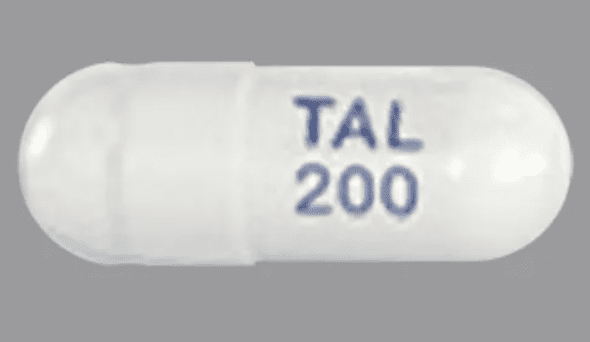Taletrectinib and Alcohol/Food Interactions
There is 1 alcohol/food/lifestyle interaction with taletrectinib.
Taletrectinib Food/Lifestyle
Major Food Interaction
Consumer information for this interaction is not currently available.
GENERALLY AVOID: Coadministration with grapefruit juice may increase the plasma concentrations of taletrectinib. The proposed mechanism for the interaction is inhibition of CYP450 3A4-mediated first-pass metabolism in the gut wall by certain compounds present in grapefruit. Inhibition of hepatic CYP450 3A4 may also contribute. The interaction has not been studied with grapefruit juice but has been reported for other CYP450 3A4 inhibitors. In a clinical study, taletrectinib peak plasma concentration (Cmax) increased by 1.8-fold and systemic exposure (AUC) increased by 3.3-fold following concomitant administration of itraconazole, a potent CYP450 3A inhibitor. According to the product labeling, administration of taletrectinib with a moderate CYP450 3A inhibitor is predicted to increase taletrectinib Cmax and AUC by up to 1.5- and 2.6-fold, respectively. Increased exposure to taletrectinib may increase the risk and/or severity of adverse effects such as hepatotoxicity with liver enzyme elevations, lung toxicities, QT prolongation, hyperuricemia, myalgia with creatine phosphokinase elevation, and skeletal fractures.
ADJUST DOSING INTERVAL: Coadministration with high-fat food (1000 calories, 50% fat) increased taletrectinib Cmax and AUC by 1.5-fold, and the predicted increase in the QTc interval is 20.5 msec.
MANAGEMENT: The manufacturer recommends avoiding food or drink containing grapefruit during treatment with taletrectinib. In addition, taletrectinib should be administered on an empty stomach at about the same time each day, at least 2 hours before or 2 hours after food intake.
Switch to professional interaction data
Taletrectinib drug interactions
There are 349 drug interactions with taletrectinib.
Taletrectinib disease interactions
There are 5 disease interactions with taletrectinib which include:
More about taletrectinib
- taletrectinib consumer information
- Check interactions
- Compare alternatives
- Side effects
- Dosage information
- During pregnancy
- Drug class: multikinase inhibitors
- En español
Related treatment guides
Drug Interaction Classification
| Highly clinically significant. Avoid combinations; the risk of the interaction outweighs the benefit. | |
| Moderately clinically significant. Usually avoid combinations; use it only under special circumstances. | |
| Minimally clinically significant. Minimize risk; assess risk and consider an alternative drug, take steps to circumvent the interaction risk and/or institute a monitoring plan. | |
| No interaction information available. |
See also:
Further information
Always consult your healthcare provider to ensure the information displayed on this page applies to your personal circumstances.


